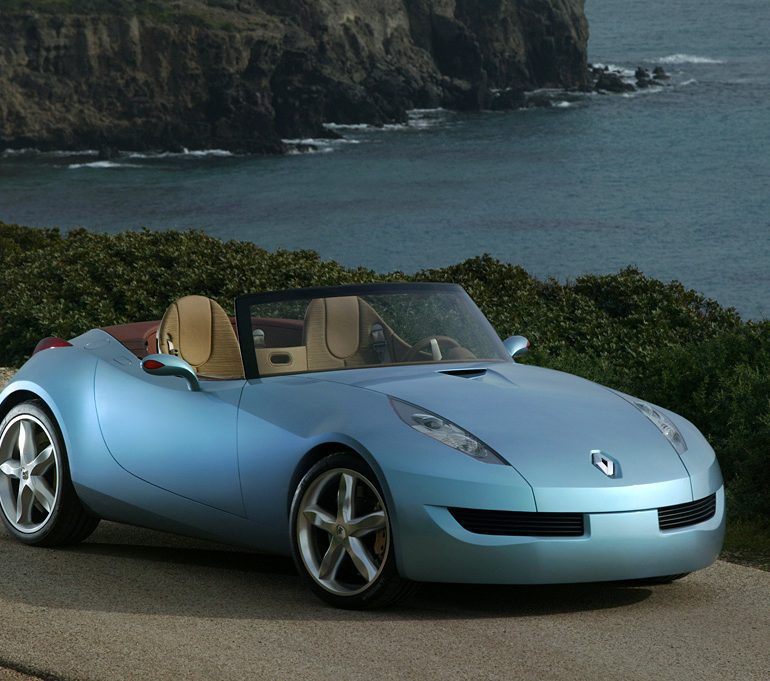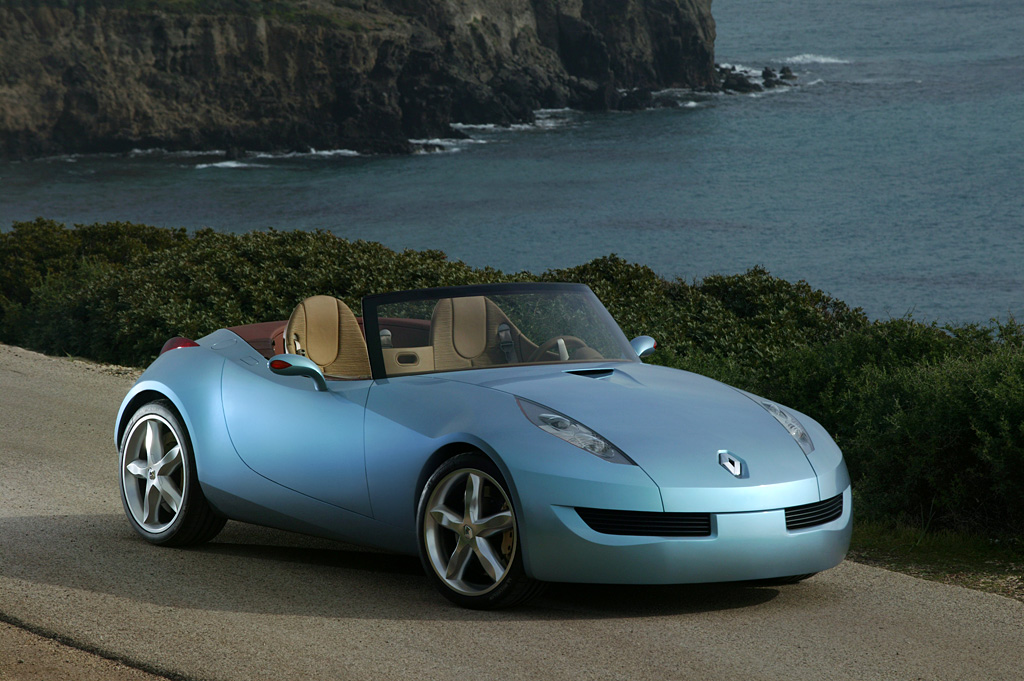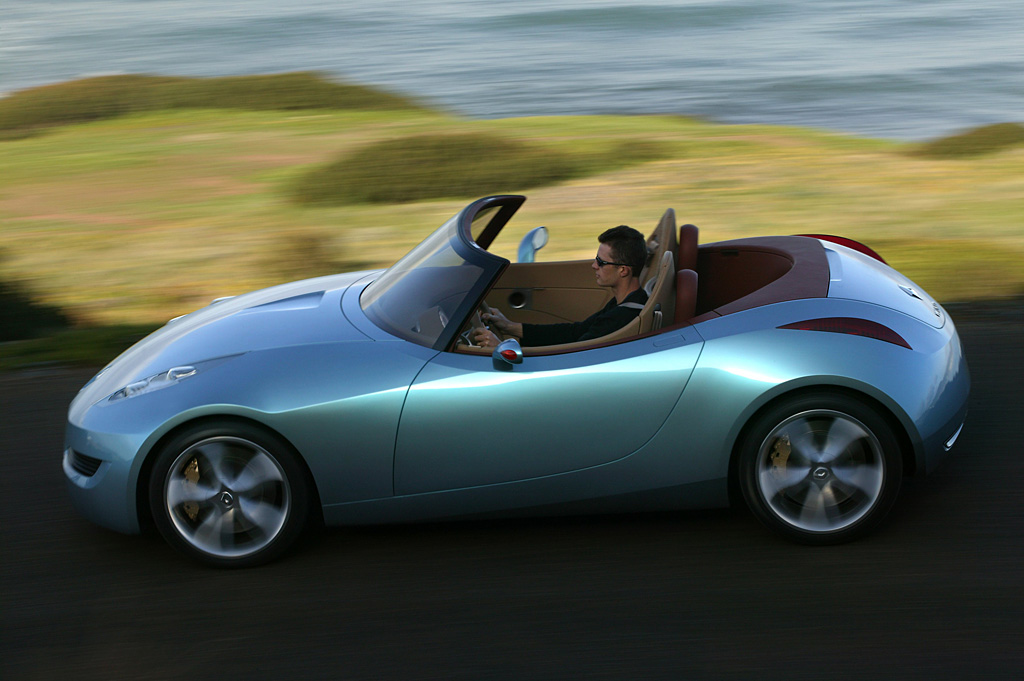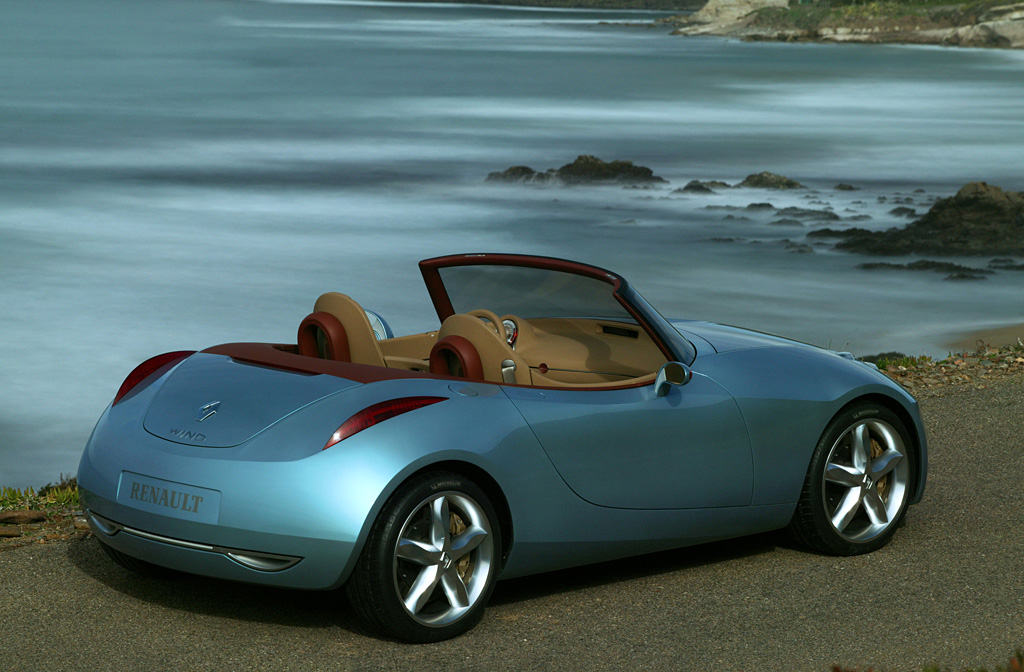2004 Renault Wind
Renault will unveil its new concept car Wind at the 2004 Geneva Motor Show in March. This two plus one roadster with a streamlined design and lively performance combines both flowing and structured lines. The interior is elegant in accordance with a ‘Touch Design’ concept, boasting a cabin that seems to be cloaked in leather. The controls put the emphasis on ergonomics and simplicity.
The Wind roadster is fitted with a 136bhp 2.0 16V petrol engine producing 191Nm of torque. The compact dimensions contribute to the lightweight of the vehicle at 850 kgs, which in turn provides nimble handling and dynamic performance. 0-62mph takes 8.5 seconds.
Styling
Wind’s profile gives an impression of simplicity and consistency. It is made up of two defining lines. The first runs along the side of the car, curving into the front and rear wings and sweeping round the wheel arches. The second line, even more apparent, envelops the cabin and underscores the impression of protectiveness.
The powerful headlamps also contribute to Wind’s appeal. They extend along the bonnet, highlighting the car’s dynamism with a streamlined, elongated shape and take their inspiration from previous concept cars like Vel Satis and Talisman. Despite their simple looks, the headlamps conceal complex technology. A powerful jet of blue-tinted light flows through a long transparent tube stretching across vertical glass covers.
The almond-shaped rear lamps continue the body silhouette with their sharp edge. Two powerful LEDs light up parallel glass covers, creating striking beams of light to the sides and rear.
The arc of the panoramic windscreen extends around the sides of the car with a curve that incorporates the side windows. The cabin can be covered with a triple thickness fabric roof including a rounded rear glass window that continues the oval theme.
Interior
The cabin is moulded around the driver and passengers. A large sheet of Sienna-coloured leather forms an enveloping cocoon. The pleated leather seats, Tobacco in colour, are elegant and comfortable. They are fixed, in tune with the roadster spirit, while the steering wheel and pedal assemblies are adjustable and fold away automatically when the door is opened for easier access. Two folding leather-covered rollhoops form an extension of the rigid structure to which they are fitted.
Wind is a 2+1 roadster. The central section linking the backs of the two front seats is made of carbon fibre covered in foam and leather. It can be unhooked and turned inside out, forming a saddle shape that provides a third seat in the rear of the car. Despite its compact size (3.87 metres long and only 10cm longer than a Clio), Wind is extremely roomy. The boot, lined with embossed leather, offers reasonable luggage space (232 litres).
All the vehicle’s controls feature an anodised aluminium finish for a muted look. In accordance with the ‘Touch Design’ concept developed by Renault over the past three years, they put the emphasis on ergonomics, simplicity and clarity. A circular, centrally mounted control panel provides access to each set of functions for communications, music, navigation and services by means of a button in the middle of the circle. Data is displayed on a screen at the top of the dashboard.
The gearbox mode selector is also in the centre of the dashboard. Gear shifting takes place using paddles on the steering wheel through a Quickshift 6 speed manual gearbox with automatic clutch.
The design of the speedometer-cum-rev. counter dial is both simple and sophisticated. With an anodised aluminium surround, it is cut into a glass cylinder. Data is displayed in both analogue (a needle indicating speed) and digital form. Patches of blue followed by red move around the cylinder as the engine speed increases.
In the driver’s door of the vehicle, a push-button cylinder incorporating the air conditioning controls swings out to display the temperature in the cabin.
Story by Renault, edited by Supercars.net
In Detail
| submitted by | Richard Owen |
| type | Concept / Prototype Car |
| released at | 2004 Geneva Motor Show |
| built at | France |
| production | 1 |
| engine | Inline-4 |
| valvetrain | 4 Valves per Cyl |
| displacement | 2000 cc / 122.0 in³ |
| power | 101.4 kw / 136 bhp |
| specific output | 68.0 bhp per litre |
| bhp/weight | 160.0 bhp per tonne |
| torque | 191 nm / 140.9 ft lbs |
| front tires | 245-35 / ZR19 Michelin Pilot Sport 2 |
| rear tires | 245-35 / ZR19 Michelin Pilot Sport 2 |
| curb weight | 850 kg / 1874 lbs |
| wheelbase | 2395 mm / 94.3 in |
| front track | 1510 mm / 59.4 in |
| rear track | 1510 mm / 59.4 in |
| length | 3870 mm / 152.4 in |
| width | 1750 mm / 68.9 in |
| height | 1260 mm / 49.6 in |
| transmission | Six-speed Quickshift |
| 0 – 60 mph | ~8.4 seconds |







